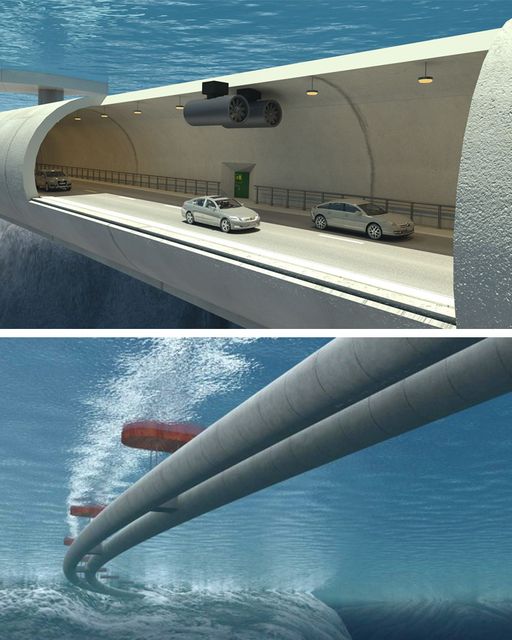Norway’s European Route E39 is not just another infrastructure project; it’s the country’s most ambitious one yet. Costing an estimated $50 billion, this 1,330 km highway will transform travel along Norway’s coastline, linking two sides of the country and extending all the way to Denmark. But this isn’t an ordinary road. This monumental highway comprises underground tunnels, floating bridges, and stretches that cut through fjords, mountains, and the sea itself, making it one of the most complex roads globally.

The project aims to reduce the reliance on ferries in Norway, a critical concern due to the country’s unique geography. Currently, traveling the full length of the highway takes around 21 hours, involving multiple ferry rides and detours. By cutting through natural obstacles, the E39 will streamline travel, connecting remote regions and reducing travel time significantly.
Bridging the Fjords: The Engineering Marvels
The most impressive sections of the highway are undoubtedly its bridges and tunnels. One of the first major segments is the undersea tunnel connecting Boknafjorden and Bjornafjorden. This 27-kilometer-long tunnel, submerged nearly 400 meters below the sea, will be the longest of its kind when completed. Despite these mind-boggling engineering feats, the most ambitious part of the highway is the Stord-Os bridges. These bridges are designed to replace ferry routes between Sandvikvåg and Halhjem, providing a direct road connection over Bjornafjorden.

In particular, the Stord-Os floating bridge is a groundbreaking innovation in civil engineering. The bridge will span 5 kilometers and will be anchored to the fjord floor while floating on the surface, an engineering solution necessitated by the deep fjords and harsh environmental conditions in the region. Once complete, it will be one of the longest floating bridges in the world.
Why the E39 is So Important for Norway
The E39 highway is not just about cutting travel time or reducing ferry usage. It’s a vital infrastructure project that will connect isolated communities along Norway’s rugged coastline. Many towns and villages rely heavily on ferries for transportation, making them difficult to reach during bad weather. By replacing these ferries with tunnels and bridges, the E39 will provide a much more reliable means of transportation.

Moreover, the highway will likely have a significant economic impact. Norway’s coastal regions are rich in natural resources, particularly fish and seafood, which are exported around the world. By improving transport routes, the E39 will make it easier to move goods across the country and to international markets. This will reduce transportation costs for businesses, making Norwegian products more competitive globally.
The Norwegian government also expects that the highway will boost tourism. The breathtaking landscapes along the E39 route, including fjords, mountains, and coastal villages, attract tourists from all over the world. By making these areas more accessible, the highway could encourage more visitors, boosting local economies.
Environmental and Social Considerations
Of course, a project of this scale does not come without its challenges. One of the primary concerns is the environmental impact. Norway’s fjords and coastal regions are renowned for their pristine natural beauty, and many Norwegians are keen to preserve this environment. The Norwegian Road Administration, which is overseeing the project, has been mindful of these concerns and is implementing measures to minimize the impact on wildlife and the environment.

There are also social considerations to take into account. While the highway will undoubtedly benefit many, there are some who are concerned that it could lead to the erosion of traditional ways of life in Norway’s coastal communities. For centuries, these regions have relied on ferries and boats for transportation, and some fear that the new highway could change the character of these areas.
Conclusion: A Landmark Achievement
Despite these challenges, the E39 highway is a landmark achievement for Norway. When completed, it will be a testament to human ingenuity, overcoming natural obstacles to connect a nation divided by its rugged geography. More importantly, it will provide faster, safer, and more reliable transportation for Norwegians, whether they are traveling for work, leisure, or transporting goods. For tourists, it offers a new way to explore the stunning beauty of Norway’s coastline.
In the coming years, as the final segments of the highway are completed, the E39 will become an iconic part of Norway’s landscape. It’s not just a road; it’s a symbol of progress and connection, bridging not just fjords and mountains, but also communities and opportunities.

